
Spring Cleaning & Falling in Love – AGAIN
Explore a journey through nostalgia as spring cleaning unveils forgotten treasures from a lifetime in the world of dogs. Memories await!

Home » Dog Breeds » French Bulldog Dog Breed
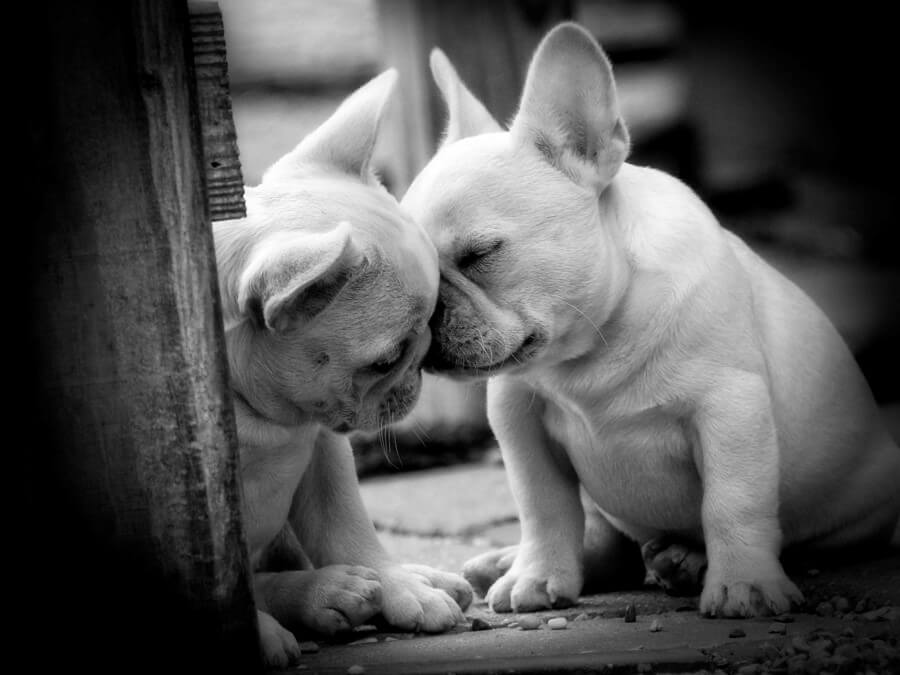

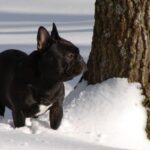


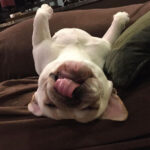
The French Bulldog, affectionately known as the “Frenchie,” is a compact, muscular canine with a smooth coat, sturdy bones and well-developed muscles, and a short-nosed facial expression. Originating from France, this breed has swiftly gained popularity worldwide, especially in the United States, for its endearing nature and adaptability to urban and suburban living. A companion dog at heart, the Frenchie is renowned for its amiable temperament, expressive eyes, and bat-like ears that stand tall and alert.
Non-Sporting
11 – 13 Inches
Under 28 Pounds
10 – 12 Years
| Country of Origin | France |
|---|---|
| Bred For | Rat Catching, Companionship |
| Known For | Bat Ears, Unique Topline, Playfulness |
| Popularity | High |
| Temperament | Active, Affectionate, Alert, Playful |
| Activities | Conformation Shows, Dog Sports, Therapy Dog |
The captivating history of the French Bulldog, like its charming demeanor, spans national borders and several centuries. Contrary to its name, the breed’s origins can be traced back to England. During the 19th century, lace workers from Nottingham, England, relocated to France in search of better opportunities and brought along their miniature Bulldogs, which were smaller and had erect “bat” ears, distinct from the traditional English Bulldog.
Upon arriving in France, these small Bulldogs quickly became popular companions among the local Parisians, especially with women and people who lived in the city’s creative quarters. Their popularity soared, and they soon became symbols of urban Paris. These dogs were aptly renamed Bouledogue Français or French Bulldogs.
Their fame, however, wasn’t limited to France. By the late 19th century, the breed had garnered attention in the United States, and by the early 20th century, the French Bulldog had become a favorite among America’s elite. The breed’s popularity in the States led to a surge in demand, further solidifying its distinct physical features and characteristics.
The French Bulldog’s unique appearance and engaging personality led to its formal recognition. The American Kennel Club (AKC) officially recognized the breed in 1898, followed by the The Kennel Club (UK) in the early 20th century. The Fédération Cynologique Internationale (FCI) acknowledges the breed within the group of small molossian-type dogs.
Over the years, the French Bulldog’s popularity has only increased, making the breed one of the most beloved worldwide. The Frenchie’s rich history, intertwined with the story of laborers, artists, and aristocrats, showcases the breed’s charm, versatility, and universal appeal.
Adult male French Bulldogs typically stand between 11 and 13 inches tall at the withers, while mature females are slightly smaller, generally measuring from 11 to 12 inches.
When it comes to weight, males usually weigh from 20 to 28 pounds, while females generally fall within the 16- to 24-pound range.
The French Bulldog boasts a well-proportioned and compact body, giving it a powerful appearance despite the breed’s small size. Its substance is characterized by a solid bone structure and muscular physique, ensuring strength and durability. The distance from the French Bulldog’s withers to the ground is roughly equivalent to the distance from the withers to the tail, lending the breed a balanced, square appearance. The breed’s stoutness, combined with its balanced proportions, gives the Frenchie its distinctive presence.
Texture: The coat of the French Bulldog is short, smooth, and moderately fine. It lies close to the body, offering a sleek appearance while providing some protection against the elements. The Frenchie’s skin is soft and loose, and on the head and shoulders it forms the breed’s characteristic wrinkles. A coat that is not short and smooth is unacceptable in the breed
| Standard Color | |
|---|---|
| Brindle | ee |
| Brindle & White | ee |
| Cream | ee |
| Fawn | ee |
| Fawn & White | ee |
| Fawn Brindle | ee |
| White | ee |
| White & Brindle | ee |
| Fawn White & Brindle | ee |
| White & Fawn | ee |
Unacceptable (Fad) Coats, Colors & Markings: The following coats, colors and/or markings are disqualifications per the French Bulldog Breed Standards:
| Standard Marking | |
|---|---|
| Black Markings | ee |
| White Markings | ee |
| Black Mask | ee |
| Brindle Markings | ee |
| Piebald | ee |
| Fawn Brindle | ee |
| Ticked | no |
A Note About Color: A French Bulldog must have a solid black nose; lighter in light-colored dogs is acceptable. Frenchies must have a dark eye color; lighter in light-colored dogs is acceptable. Blue eyes are never acceptable in a French Bulldog.
The head of the French Bulldog is one of its most defining features, characterized by both its structure and its expressiveness.
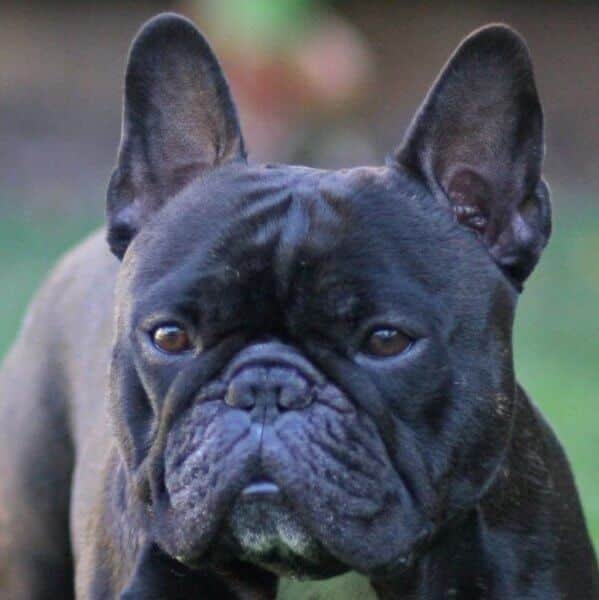
The tail of the French Bulldog is another distinguishing feature of the breed. It is short, set low on the rump, and hangs naturally. Depending on its shape, the tail can appear either straight or a corkscrew.
The straight tail is thick at the base and tapers to a fine point. The corkscrew tail is characterized by its twisty nature. Whatever its shape, the tail should be set and carried neither too high nor too low, and it should complement the dog’s overall compact silhouette.
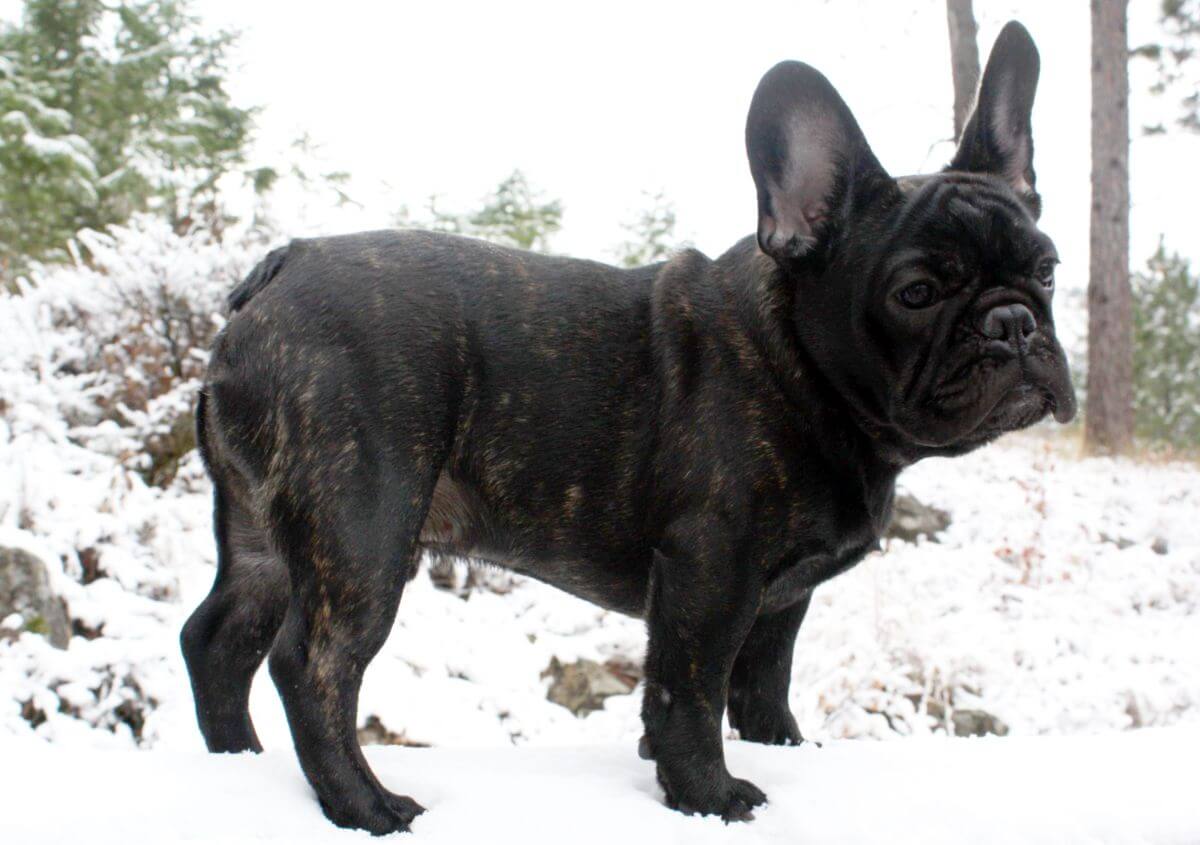
Owning a French Bulldog can be a delightful experience. These little dogs are known for their affectionate nature, playful antics, and deep bond they forge with their families. While they certainly can be a joy to have around, prospective owners should also be aware of some considerations to ensure the Frenchie’s well-being.
Like all breeds and mixed breeds, French Bulldogs come with their own specific set of health considerations. Their compact size and unique physical characteristics, such as their flat face (brachycephalic), mean they may encounter certain health concerns more frequently than other breeds.
Lifespan: The average lifespan of a French Bulldog is around 10 to 12 years. While many dogs will live a full, healthy life, understanding the potential health risks can help in prolonging their lifespan.
French Bulldogs may be predisposed to certain health conditions, including:
It’s essential for French Bulldog owners to schedule regular vet check-ups and remain proactive about their pet’s health. Early detection and intervention can mitigate many of these issues, ensuring a happier and more comfortable life for the dog.
French Bulldogs have made a name for themselves as delightful companions, and their popularity is in no small part due to their endearing personalities. At the heart of a Frenchie is an affectionate, loyal, and sociable soul. The playful antics of these energetic dogs often entertain their families, and these clownish canines thrive when showered with attention.
For novice owners, a Frenchie can be a suitable choice. As a whole, the breed is generally easygoing and adaptable, and its smaller size makes these dogs manageable for first-time pet people. However, it’s essential to remember that while they might be small in stature, they are packed with big personalities.
Sensitive by nature, Frenchies often form deep bonds with their families. They can sense the mood in the room and often act as little emotional barometers. It’s important to approach training with kindness and positive reinforcement, as harsh words can sometimes affect them deeply.
One of the charms of this breed is its relatively low tendency to bark. While Frenchies will alert their owners to strangers or unusual sounds, they aren’t known to be excessive barkers. This trait, combined with a small size, makes this breed suitable for apartment living.
When it comes to other dogs, Frenchies can be quite social. They usually enjoy the company of their canine peers, although early socialization is crucial to make sure they develop good doggy manners. Families with young children can find a gentle friend in the French Bulldog, but as with all breeds, it’s essential to teach children how to approach and handle dogs appropriately.
Although they exhibit friendliness towards their family and acquaintances, French Bulldogs can be initially reserved with strangers. Given a little time and gentle introduction, however, they usually warm up and might even ask for belly rubs from a new friend.
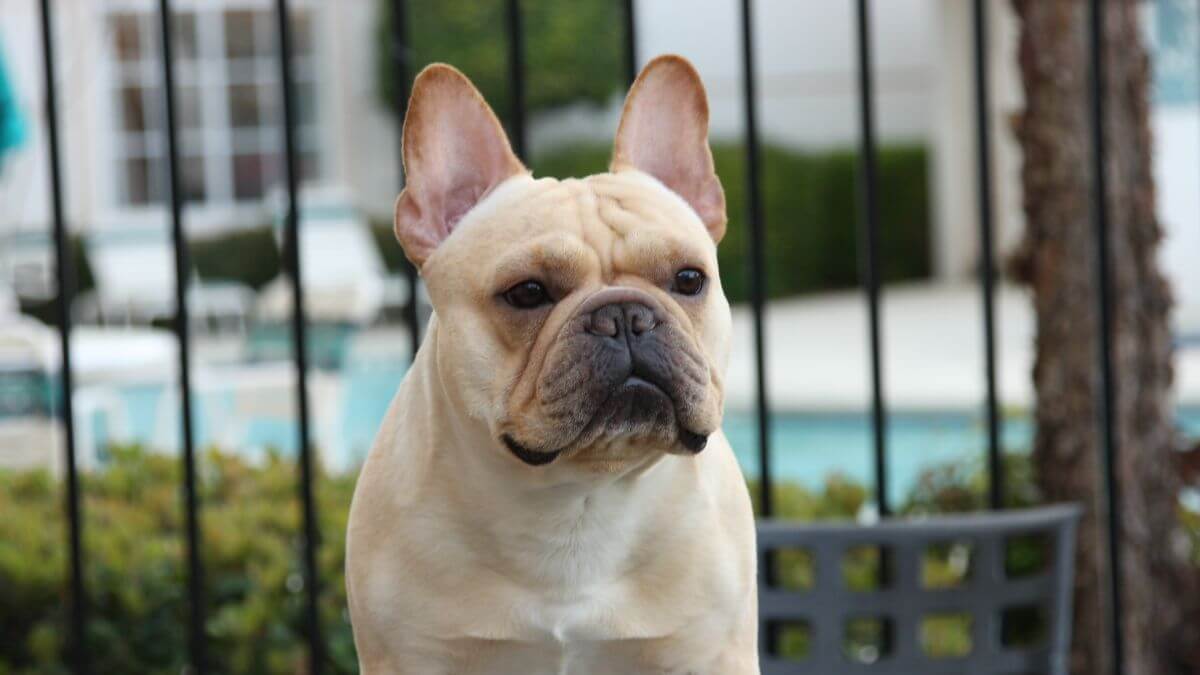
A French Bulldog’s diet plays a pivotal role in maintaining its health, energy, and overall well-being. Since this is a smaller breed, dietary requirements differ from those of larger breeds, but the emphasis on quality remains paramount.
When considering food for French Bulldog puppies, it’s essential to opt for a high-quality, puppy-specific formula. Puppies are bustling with energy and require food that supports their growth phase. As a general guideline, it’s recommended to feed them three to four times a day, given their smaller stomachs.
As French Bulldogs transition into adulthood, their dietary needs will shift. An adult Frenchie will typically need less food than a growing puppy. High-quality adult dog food, preferably tailored for small breeds, is optimal for their needs. On average, the amount of food an adult requires usually falls between 1 to 2 cups per day, divided into two meals. It’s crucial to adjust the amount based on the dog’s individual activity level and metabolism.
The specific amount of food also depends on various factors such as the dog’s age, activity level, metabolism, and the caloric content of the food. To ensure a balanced diet, it’s always a good idea to consult with a veterinarian who can provide personalized advice based on the dog’s weight and health status.
Just as with any breed, monitoring the French Bulldog’s weight is essential. Overfeeding can lead to obesity, a condition that can exacerbate some of the health issues common to the breed, such as respiratory and joint ailments. Conversely, underfeeding can affect a dog’s energy levels and its immune system. Regular check-ins with a veterinarian, and keeping an eye on the dog’s physique—ensuring the dog maintains a slight waistline and the ribs are palpable but not prominently visible—can help to strike the right balance in its individual diet.
Training a French Bulldog can be both a delightful and challenging experience. The breed’s playful demeanor and intelligent eyes reveal a dog that’s curious and eager, yet sometimes a tad stubborn.
Frenchies are smart, which means they pick up on commands and cues relatively quickly. However, this intelligence can sometimes translate to a bit of willfulness. If a French Bulldog doesn’t see the point of a command, or finds a particular activity uninteresting, it might choose to act aloof or distracted. Therefore, variety in training sessions is vital to keep this dog engaged.
One of the standout traits of the breed is its desire to please its people. Capitalizing on this characteristic, using positive reinforcement techniques, such as treats, praise, and play, can be highly effective. Harsh methods or negative reinforcement can harm the bond of trust between the dog and the trainer and may even lead to adverse behavioral outcomes.
The breed is not particularly vocal. While Frenchies will indeed alert their families to unfamiliar presences or sounds, they’re not known to bark without reason. This trait can be an advantage for those living in shared spaces or apartment buildings, but it’s still important to teach appropriate barking behavior to any dog.
A potential challenge with Frenchies can be their occasional penchant for chasing. It’s a playful trait, not an aggressive one, but teaching a reliable recall command is critical to ensure their safety. It’s always recommended to keep them on a leash during walks unless they’re in a secured area.
Wanderlust is not a significant concern for the French Bulldog. These dogs are quite attached to their families and prefer staying close to their loved ones rather than exploring unknown territories. That said, a secure yard or home environment is always a good idea to prevent any unexpected escapades.
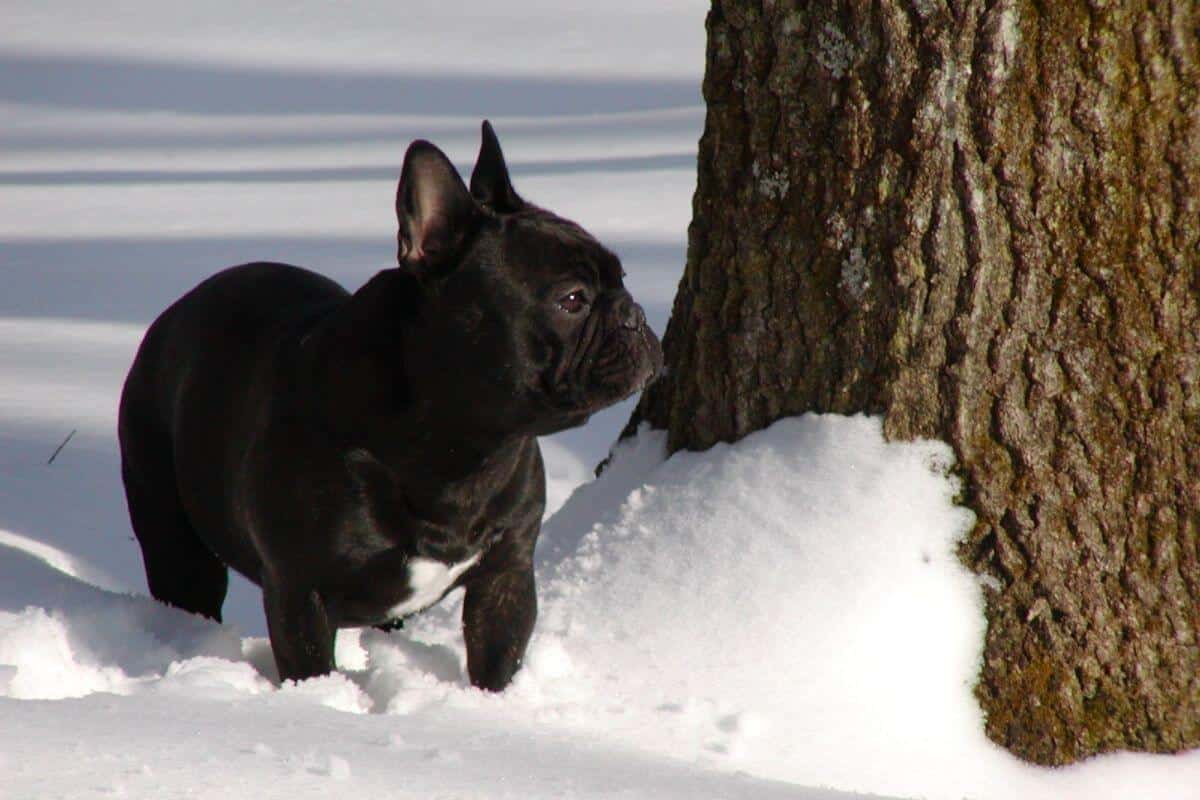
While the French Bulldog may have a compact and muscular physique, it’s essential to remember that this breed’s exercise needs differ from those of more energetic breeds. The Frenchie’s unique brachycephalic (short-nosed) structure plays a significant role in determining an exercise regimen.
| Energy Level | Medium-High |
|---|---|
| Exercise Requirements | 1 Hour/Day (Minimum), Daily Walks, Regular Exercise, Playing with Another Dog, Mental Stimulation |
Frenchies can be high-energy dogs. They enjoy play sessions just as much as short walks. A couple of brief, leisurely strolls around the neighborhood or some playful moments in the yard will usually suffice to keep these dogs physically active and mentally stimulated. However, due to their susceptibility to overheating, extended or intense exercise sessions are not recommended, especially in hot or humid conditions.
Despite their playful nature, Frenchies can be quite content lounging indoors, making them suitable for apartment living. They will still need their daily dose of activity, however, to prevent obesity, a condition they can be prone to if their diet and exercise needs aren’t managed correctly.
It’s crucial to be attentive to the breed’s signs of exhaustion or respiratory stress. The Frenchie’s short nose can make these dogs more prone to breathing difficulties, especially in extreme temperatures. On particularly hot days, it is advisable to limit outdoor activities and make sure they have a cool, comfortable spot indoors.
The playful antics of the French Bulldog make play sessions a delightful experience. Toys, especially those that stimulate the dog’s intellect, can be great for indoor play. A game of fetch or tug-of-war can be enjoyable too, but always ensure it’s offered in moderation and in a controlled environment where the dog won’t overexert itself.
Grooming a French Bulldog is a relatively straightforward task due to the breed’s short, sleek coat. However, even though the breed has minimal hair, regular maintenance is essential to ensure the skin and coat remain healthy.
| Coat Type | Short, Smooth, Brilliant |
|---|---|
| Grooming Requirements | Weekly Brushing, Occasional Bathing, Routine Ear Cleaning, Periodic Nail Trimming, Regular Tooth Brushing |
The coat of a Frenchie is smooth and lies close to the body. It’s not prone to tangling or matting, making it easier to manage than a longer-haired breed. A weekly brushing session using a soft-bristle brush or a grooming mitt can help to remove loose hairs and promote circulation to the skin. These sessions are also an excellent opportunity to check for any skin issues, as Frenchies can be prone to certain conditions such as allergies and dry patches.
Shedding is a natural process for most dogs, and the French Bulldog is no exception. While the breed isn’t a heavy shedder, these dogs do have periods, especially between seasons, when they shed more than usual. Regular brushing can help to manage and reduce the amount of hair around the home during these times.
Bathing a Frenchie doesn’t need to be a frequent chore. Due to the breed’s short coat, these dogs don’t accumulate dirt as much as some other breeds might. Bathing them once a month or when they get particularly dirty is usually sufficient. Using a mild dog-specific shampoo can help to prevent skin irritation and maintain the natural oils in the coat.
One of the unique features of the French Bulldog is its facial wrinkles. These folds of skin, while endearing, can trap moisture and debris. It’s essential, therefore, to clean them gently with a damp cloth and dry them thoroughly to prevent any potential infections or irritations.
Other grooming aspects, such as nail trimming, ear cleaning, and dental care, are standard care practices as with any other dog. Regular checks and maintenance can prevent potential health issues and will keep the French Bulldog looking and feeling its best.
Having a French Bulldog as a companion can be a joyous experience filled with affection, laughter, and unique experiences. Understanding the breed’s specific needs and characteristics (and quirks) will ensure a harmonious life together for everyone.
One of the primary attributes of the Frenchie that endears the breed to many is its adaptability to various living conditions. The moderate energy level and compact size of these dogs make them well-suited for apartment living. They don’t need a backyard to roam, but if they have access to one it should be securely fenced to provide for their safety.
While Frenchies love being close to their human companions, they can also be independent at times. It’s essential, however, not to mistake this independence for a tolerance for prolonged solitude. Frenchies are social animals, and prolonged isolation can lead to feelings of loneliness or even separation anxiety. While they might be okay being alone for short durations, it’s crucial to ensure they have sufficient companionship and stimulation throughout the day.
Temperature sensitivity is a significant consideration when living with a French Bulldog. The breed’s brachycephalic nature means these dogs can easily get overheated, so they need a cool, comfortable environment, especially during the hotter months. Air-conditioned spaces or fans can be beneficial. On the flip side, their short coat doesn’t offer the Frenchie much protection during colder months, so a sweater or protective gear might be needed for outdoor excursions in the cold.
The expressive and communicative nature of the French Bulldog can be both amusing and informative. These clownish characters make a range of sounds, from barks to yawns to unique vocalizations, which they use to communicate their feelings and needs, or just to participate in a conversation. Their expressive faces, complete with those iconic bat ears, can reveal a lot about their mood, making it easier to gauge their feelings.
In essence, living with a French Bulldog is akin to having a cheerful, occasionally mischievous and always affectionate, friend by your side. Understanding and catering to the breed’s specific needs will typically be rewarded with unwavering loyalty and a bond that lasts a lifetime.
Welcoming a French Bulldog puppy into the home is an exciting venture that’s filled with plenty of playtime and lots of learning. That little bundle of joy, with those oversized ears and inquisitive eyes, can quickly steal hearts, but the puppy also comes with a unique set of needs that everyone should be prepared for.
The first few months of a French Bulldog puppy’s life are crucial for its development, both physically and behaviorally. Thus, understanding the little one’s needs can set the foundation for a happy and healthy life.
Feeding is one of the primary concerns for anyone who brings home a new puppy. Frenchie puppies have fast-growing bodies and require a diet that supports their growth and development. Quality puppy food, specifically formulated for small breeds, can provide them with the necessary nutrients. Portion control and regular feeding times are also essential to prevent overfeeding and ensure consistent growth.
Socialization is another critical aspect of puppy care. Introducing the puppy to various environments, people, and other animals during those early months can help to develop a well-rounded personality. Positive experiences can reduce the chances of the puppy becoming fearful or aggressive in unfamiliar situations as they grow.
Training should start early, using positive reinforcement techniques. Frenchies are known for their stubborn streak, but they are also eager to please. Consistency, patience, and rewards can go a long way toward instilling good behavior and a reliable response to commands.
Health check-ups are vital during the initial months. Regular vet visits can monitor that the puppy is growing correctly, receiving necessary vaccinations, and is free from common puppy ailments. Given the breed’s predisposition to certain health risks, early detection and intervention can be beneficial.
It’s essential to remember that while it is robust and playful, the French Bulldog puppy also needs plenty of rest. Providing the pup with a comfortable sleeping space and ensuring it has quiet times to nap can aid its growth and development.

The French Bulldog, while adored for its affectionate nature and playful demeanor, isn’t typically known for its prowess in high-energy dog sports due to its brachycephalic (short-nosed) head and a potential for breathing difficulties. However, this doesn’t mean the breed isn’t active or uninterested in engaging activities.
While the French Bulldog may not be the go-to breed for high-intensity sports, the versatility, intelligence, and affectionate nature of these dogs make them suitable for a range of activities that emphasize their strengths and cater to their physical limitations.
The French Bulldog is recognized by the world’s leading registries and kennel organizations, which categorize the breed into a specific Group based on its unique characteristics. This breed is recognized worldwide under the following Group designations:
| Organization | Group Designation |
|---|---|
| AKC (American Kennel Club) | Non-Sporting |
| UKC (United Kennel Club) | Companion Dog |
| CKC (Canadian Kennel Club) | Non-Sporting |
| ANKC (Australian National Kennel Council) | Non Sporting |
| RKC (The Royal Kennel Club) | Utility |
| FCI (Fédération Cynologique Internationale) | Group 9 – Companion and Toy Dogs; Section 11 – Small Molossian Dogs |
The ideal French Bulldog is described by a Breed Standard that is approved by each of the world’s leading registries and kennel organizations. The Breed Standards for this breed may be found in the following links:
| Organization | Breed Standard |
|---|---|
| American Kennel Club | AKC French Bulldog Breed Standard |
| United Kennel Club | UKC French Bulldog Breed Standard |
| Canadian Kennel Club | CKC French Bulldog Breed Standard |
| Australian National Kennel Council | ANKC French Bulldog Breed Standard |
| The Royal Kennel Club | RKC French Bulldog Breed Standard |
| Fédération Cynologique Internationale | FCI French Bulldog Breed Standard |
For enthusiasts and fans of the French Bulldog, numerous clubs and organizations offer a platform to share, learn, and celebrate the breed. These clubs play a pivotal role in upholding the Breed Standard, promoting responsible ownership, and providing resources for both novice and seasoned aficionados.
The French Bulldog Club of America (FBDCA) is the oldest club in the world dedicated to the French Bulldog. Established in 1897, the FBDCA is a member club of the American Kennel Club (AKC) that provides a wealth of information, resources, and events for fun-loving Frenchie folk.
In Canada, the French Bulldog Fanciers of Canada (FBFC) is dedicated to the promotion, protection, and advancement of the French Bulldog. They offer guidance on living with the breed, hold specialty shows, and work tirelessly to educate the public about the breed’s unique characteristics and needs.
The French Bulldog Club of England (FBCE) is the leading club for the breed in the United Kingdom. With a history tracing back to 1902, the FBCE champions the health and well-being of the Frenchie while also providing a platform for enthusiasts to engage in shows, seminars, and social events.
Membership in these clubs often provides access to exclusive events, educational resources, and a community of like-minded individuals who share a passion for the French Bulldog.
Rescue organizations play an essential role in the world of purebred dogs, ensuring that every dog, regardless of its circumstances, gets a chance at a loving, forever home. French Bulldogs are no exception, and given the breed’s popularity, there are several dedicated groups that focus solely on rescuing, rehabilitating, and rehoming Frenchies in need.
The French Bulldog Rescue Network (FBRN) is one of the most well-known organizations in the United States that is committed to rescuing, rehabilitating, and rehoming the breed. The organization’s extensive network of volunteers work diligently to provide medical care, foster homes, and eventually, permanent homes to Frenchies in distress.
In the United Kingdom, French Bulldog Rescue GB was established to provide assistance to French Bulldogs in need. The group’s commitment lies in providing a safe and nurturing environment for all Frenchies, addressing their medical needs and ensuring they find the right forever home.
It’s essential to understand that rescue groups rely heavily on the support of volunteers, donors, and adoptive families. Adopting a French Bulldog from a rescue organization can be a deeply rewarding experience, giving a dog a second chance at love. Additionally, anyone who is looking to support without adopting can consider volunteering, fostering, or donating to these admirable groups.
Yes, French Bulldogs are often considered good family dogs. They have friendly and affectionate personalities that make them great companions for families, and they generally get along well with children and other pets. However, it’s always important to supervise interactions between dogs and young children, and teach children how to properly handle and treat the dog with respect.
French Bulldogs are social animals that enjoy human company. While they can tolerate being alone for moderate periods, they are not the best breed for long periods of isolation. If left alone for extended periods, they can develop separation anxiety and exhibit unwanted behaviors. It’s recommended to gradually train Frenchies to be comfortable with alone time and to provide them with mental stimulation and toys when no one else is home.
French Bulldogs are not generally excessive barkers. They are known for their unique vocalizations, which can include various grunts, snorts, and “talking” sounds. While they may announce things that are happening around them, they are not typically known for constant barking like some other breeds.
French Bulldogs are known for their loyalty and affection towards their families. While they can form strong bonds with multiple family members, they often have a special connection with one person in the household. However, they are generally social and enjoy spending time with everyone in the home.
French Bulldogs are considered moderate maintenance dogs. Their short coat requires minimal grooming, but they do have some special needs due to their brachycephalic (flat-faced) anatomy. They are sensitive to temperature extremes, especially heat, so it is necessary to be cautious in hot weather. Their wrinkles and facial folds also require regular cleaning to prevent skin infections. Additionally, their health and well-being need to be closely monitored due to joint issues associated with their anatomy.
Yes, French Bulldogs shed, but their shedding is considered moderate. Their short coat sheds throughout the year, but regular brushing can help to manage the shedding and keep the coat healthy and shiny.
The best food for a French Bulldog depends on factors such as age, activity level, and any specific dietary requirements. It’s important to choose high-quality dog food that provides balanced nutrition. Look for a dog food that lists a quality source of protein as the main ingredient and doesn’t contain excessive fillers or artificial additives. Consulting with a veterinarian can help to determine the most suitable diet for the individual Frenchie.

Explore a journey through nostalgia as spring cleaning unveils forgotten treasures from a lifetime in the world of dogs. Memories await!
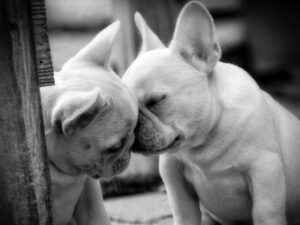
Discover the history, popularity, and uniqueness of the French Bulldog breed. Is it the right companion for you? Learn more here.

There’s a new top dog in town! The playful and adaptable French Bulldog is America’s most popular breed for the first time. Read more.
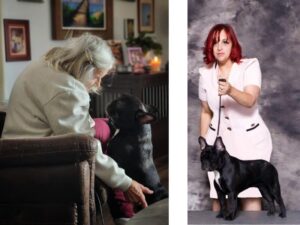
Mary Schroeder and Iva Oran are the breeders behind the Fleetfire and Noveheart French Bulldogs. Read about their dogs, champions, and more!
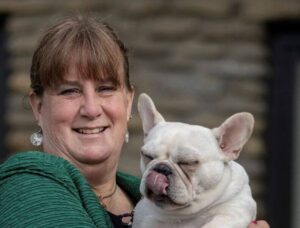
Tina Olsen is the breeder behind Starlette French Bulldogs. Read about the kennel’s beginnings, champion dogs, puppies, photos & more!
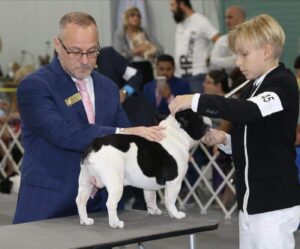
The French Bulldog, or “Frenchie” as they are affectionally called, is an active, intelligent, muscular dog of heavy bone and smooth coat.
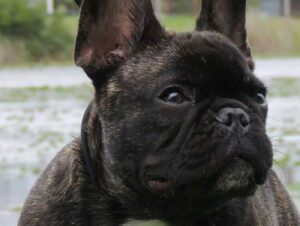
The French Bulldog comes in a wide variety of colors and patterns. Read more about the colors and patterns found in the French Bulldog.
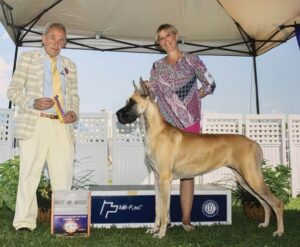
Interview with Owner Handler Sara Rude. Sara shares her experiences as an Owner Handler in the world of purebred dogs and dog shows.

Dan Sayers is the Editor-in-Chief of SHOWSIGHT digital and print publications. He received a B.S. from Drexel University where he studied interior architectural design. His professional career has allowed him to develop his planning, problem-solving, and project management skills, which were employed in the office, educational, and financial sectors. While working as a project manager, he earned a Graphic Design Certificate from the University of the Arts and began creating ads for many of America’s top-winning show dogs. Through this work, Dan became Editor-in-Chief of the nation’s first online-only dog show publication. His current role expands on this experience and broadly extends to cover the sport of dogs in Companion and Performance events as well as all aspects of Conformation.
Dan is a long-time member of the Irish Water Spaniel Club of America and is the organization’s current AKC Delegate and Archivist/Historian, as well as a club-approved Breed Mentor. From 2000-2010, he was the club’s AKC Gazette Columnist. He breeds Irish Water Spaniels under the Quiet Storm prefix and has judged the IWSCA National Specialty Sweepstakes twice. Dan is a member of the Morris and Essex Kennel Club as well as the Dog Writers Association of America, which recognized his illustrations in the award-winning canine compendium, the Encyclopedia of K-9 Terminology.
The best way to ensure a long and happy relationship with a purebred dog is to purchase one from a responsible breeder. Not sure where to begin?
Contact the National Parent Club’s Breeder Referral Program, which is listed on the AKC Breeder Referral Contacts page.


"*" indicates required fields
Showsight Magazine–the world’s most influential purebred dog publication since 1992. Each issue reaches a global audience dedicated to preserving the history and health of purpose bred dogs. Filled with award-winning editorial focused on news and insights from the dog show community, top breeders, handlers, AKC Judges, and more!